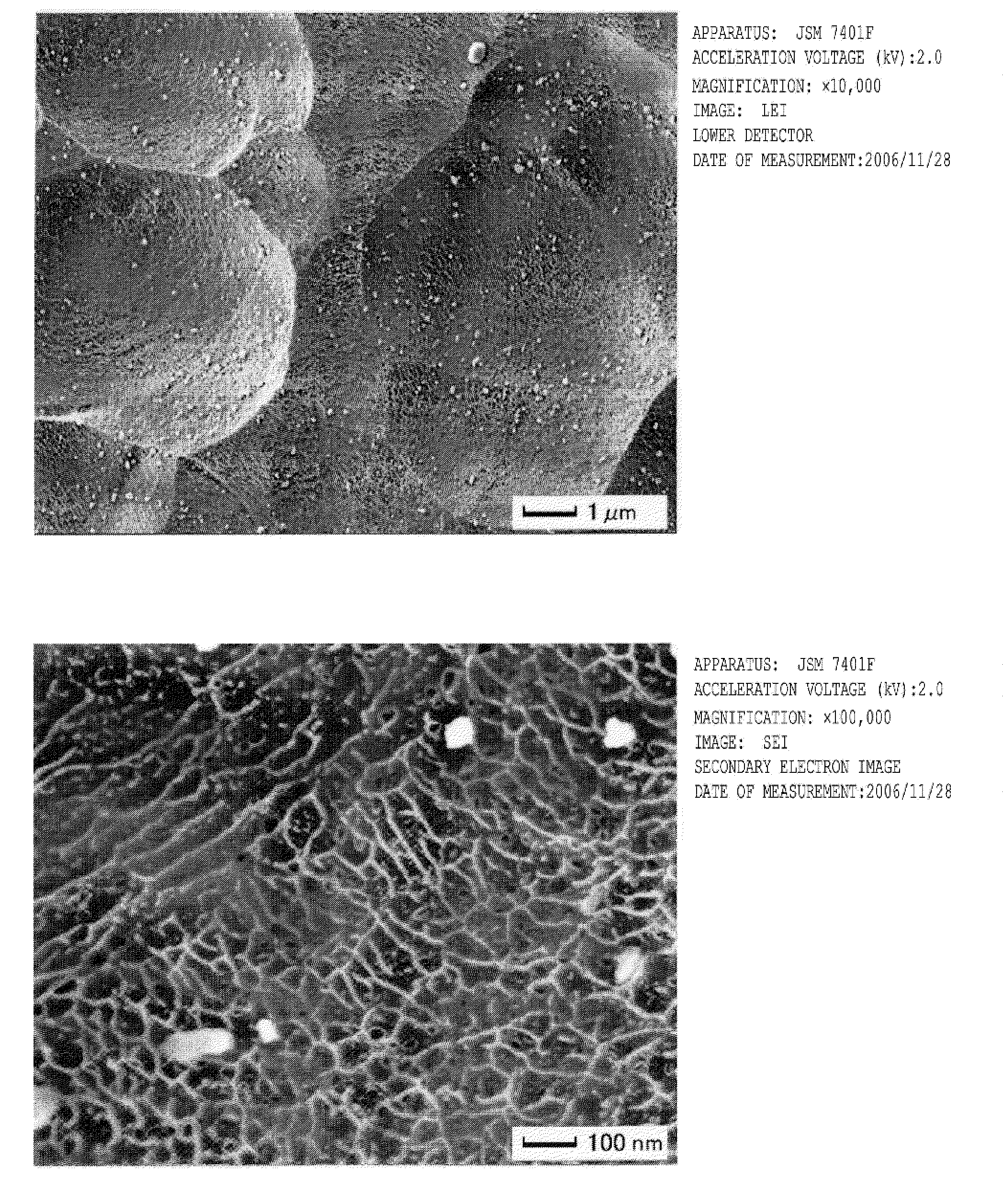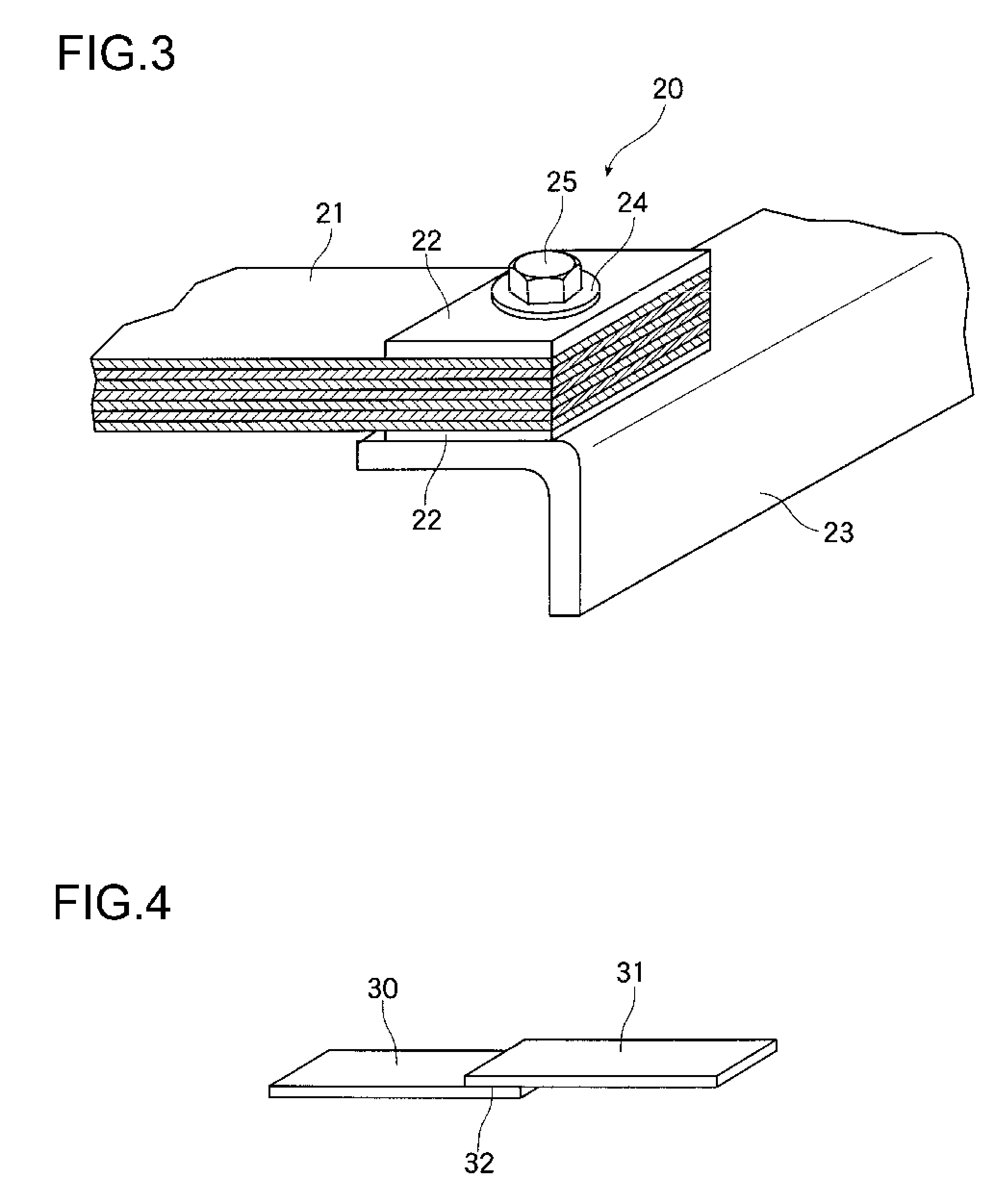Aluminum alloy composite and method for joining thereof
a technology of aluminum alloy and composites, applied in the field of aluminum alloy composites and joining, can solve the problems of laborious work, not so much growth in use as a civilian aircraft material, and not so much growth in the use of aircraft material as anticipated
- Summary
- Abstract
- Description
- Claims
- Application Information
AI Technical Summary
Benefits of technology
Problems solved by technology
Method used
Image
Examples
working examples
Experiment Example 1
Adhesion with A5052 Aluminum Alloy
[0103]Commercially available A5052 sheet stock having a thickness of 1.6 mm was acquired and cut to form a plurality of rectangular pieces measuring 45×18 mm. Water was made ready in a tank and a commercially available aluminum alloy degreaser (NE-6, available from Meltex, Japan) was added to the water to form a aqueous solution of 60° C. having a concentration of 7.5%. The rectangular pieces of aluminum alloy were immersed in the solution for 7 minutes and then thoroughly rinsed with water. An aqueous solution of hydrochloric acid having a concentration of 1% and adjusted to 40° C. was made ready in another tank, in which the aluminum alloy pieces were immersed for 1 minute and then thoroughly rinsed with water. Next, an aqueous solution of caustic soda having a concentration of 1.5% and adjusted to 40° C. was made ready in still another tank, in which the same aluminum alloy pieces were immersed for 2 minutes and then thoroug...
experiment example 2
Adhesion with A5052 Aluminum Alloy
[0107]Surface treatment for pieces of A5052 plate was carried out in the same way as Experiment example 1. Up through treatment with the degreaser (NE-6, available from Meltex, Japan), preliminary pickling treatment with a 1%-aqueous solution of hydrochloric acid and alkali etching treatment with a 1.5%-aqueous solution of caustic soda, treatment was carried out in exactly the same as in Experiment example 1. Surface treatment ended at this point and the pieces were stored in the resulting state. The same day, these aluminum alloy pieces were taken out, the epoxy adhesive EP-106 was lightly coated on the ends and desiccation treatment, joining and curing of the adhesive in a hot-air dryer were subsequently carried out in exactly the same way as in Experiment example 1, yielding the test pieces shown in FIG. 4.
[0108]In tensile failure tests carried out two days later, the average shear strength at break for the four pairs was 48 MPa. These test piec...
experiment example 3
Adhesion with A5052 Aluminum Alloy
[0109]Pieces of A5052 plate were treated in the same way as Experiment example 1 up to a given point. Up through treatment with the degreaser NE-6, preliminary pickling treatment with a 1%-aqueous solution of hydrochloric acid, alkali etching treatment with a 1.5%-aqueous solution of caustic soda and neutralization treatment with a 3%-aqueous solution of nitric acid, treatment was carried out in exactly the same as in Experiment example 1. Surface treatment ended at this point and the pieces were stored in this state.
[0110]When these aluminum alloy pieces were subjected to XPS analysis, peaks for sodium were not observed, even cumulatively. Hence, sodium was concluded to have been removed by immersion in the aqueous nitric acid solution and rinsing with water. The same day, these aluminum alloy pieces were taken out, the epoxy adhesive EP-106 was lightly coated on the ends and desiccation treatment, joining and curing of the adhesive in a hot-air d...
PUM
| Property | Measurement | Unit |
|---|---|---|
| Percent by mass | aaaaa | aaaaa |
| Percent by mass | aaaaa | aaaaa |
| Percent by mass | aaaaa | aaaaa |
Abstract
Description
Claims
Application Information
 Login to View More
Login to View More - R&D
- Intellectual Property
- Life Sciences
- Materials
- Tech Scout
- Unparalleled Data Quality
- Higher Quality Content
- 60% Fewer Hallucinations
Browse by: Latest US Patents, China's latest patents, Technical Efficacy Thesaurus, Application Domain, Technology Topic, Popular Technical Reports.
© 2025 PatSnap. All rights reserved.Legal|Privacy policy|Modern Slavery Act Transparency Statement|Sitemap|About US| Contact US: help@patsnap.com



